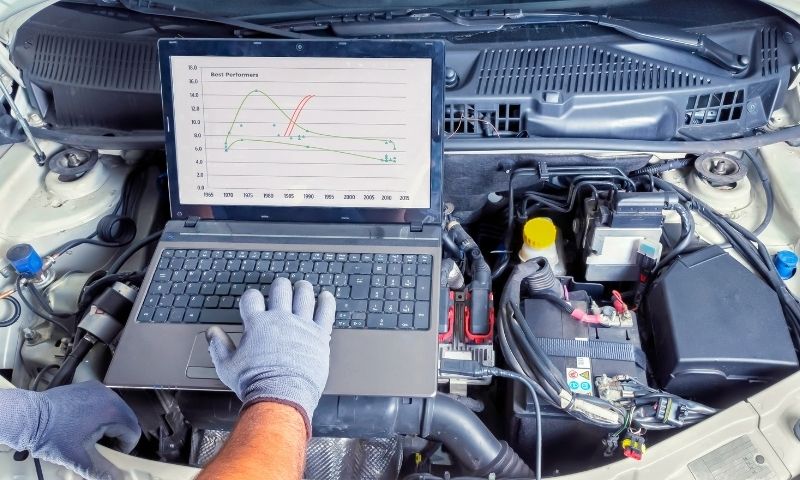A Leading Resource Built By Automotive Lovers, For Automotive Lovers.
We’ve helped consumers around the world make their purchasing decisions.
Latest Articles
Float voltage is the voltage kept in a battery after it is fully charged. For lead-acid batteries, it usually ranges from 13.5 to 13.8 volts for a 12-volt battery. This… Float voltage for lithium batteries maintains battery charge after it’s full. For 12V LiFePO4 batteries, float voltage is usually 3.2V to 3.4V per cell. This helps reduce self-discharge. For 24V… Float voltage for a lead acid battery maintains a fully charged state. It is typically between 2.25V and 2.30V per cell at 25°C (77°F). For a 12V system, the float… Equalization voltage for lithium batteries is a charging process that balances the voltage in each cell. It usually involves raising the voltage to about 2.50V per cell. This adjustment helps… The float voltage for a 12V AGM battery is usually between 13.2V and 13.8V. This voltage keeps the battery charged without overcharging. At 25°C, each cell’s float voltage should be… Energy density measures how much energy a battery can hold relative to its weight or volume. It is expressed in watt-hours per liter (Wh/L) or watt-hours per kilogram (Wh/kg). Batteries… Equalization voltage is the intentional overcharging of battery cells to balance their charge. This process typically raises the voltage to 2.50V per cell, or 10% above the recommended level. It… The electrolyte in a lead-acid battery is a mixture of sulfuric acid and water. It facilitates the flow of electrical current between the anode and cathode by allowing the movement… The end voltage of a battery, or cut-off voltage, is the minimum voltage for safe operation. It prevents over-discharging during use. The typical end voltages are: Lead-acid battery – 1.75… Enhanced Flooded Battery (EFB) technology represents an advanced type of wet-flooded battery. EFBs provide improved charge acceptance and cyclic durability. They perform well in start-stop systems and meet high energy… Efficient Dynamics is a BMW technology that utilizes Formula One principles. It features a battery that recovers energy during braking and coasting. This system improves engine efficiency, reduces fuel consumption,… Battery discharge is the process where a battery releases stored electrical energy to power devices. It happens during a discharge/charge cycle, as the battery provides energy until it reaches low… Depth of Discharge (DoD) in lithium-ion batteries is the percentage of the battery’s capacity that has been used. It is the amount of energy discharged from a fully charged battery… The discharge rate of a LiPo battery shows how fast it can release energy. It is defined by the C rating, which you multiply with the battery’s capacity in milliamp-hours… The discharge rate of a battery measures how quickly it releases energy. It is the current flow (in Amperes) compared to its capacity (in Ampere-hours). For instance, a 500 Ah… Deep cycle batteries supply steady power and handle many discharge cycles. They have thicker plates for longevity. Regular batteries give quick, high power bursts, mainly for starting engines. They are… The discharge capacity of a battery is the total energy it can deliver, measured in ampere hours (Ah). It shows the usable energy, defined by depth of discharge (DOD). The… DEWALT offers a three-year limited warranty on batteries that covers defects in materials and workmanship. This includes a one-year free service and a 90-day money-back guarantee. Some smaller battery packs… The design capacity of a battery is the total energy it holds when new, measured in Ampere-hours (Ah). This value represents the manufacturer’s specifications. The full charge capacity shows the… Depth of discharge (DoD) measures the percentage of a battery’s capacity that is used. It shows how much energy can be safely taken from the battery without affecting its lifespan…. Reserve capacity (RC) is the time, in minutes, that a fully-charged 12V deep-cycle battery can provide 25 amps of current before the voltage falls to 10.5 volts. This measurement occurs… CyberPower battery backup is an Uninterruptible Power Supply (UPS) that offers power protection. It safeguards electronics from power surges and outages. These systems keep devices, like Optical Network Terminals (ONT),… Coulombic efficiency (CE) measures how effectively a battery transfers charge. It is the ratio of discharge capacity to charge capacity in each cycle. In lithium-ion batteries, high CE, close to… Boost voltage is a higher voltage used to charge a battery quickly. It allows for high current delivery, especially after heavy use. This boosts charging time and improves the state… Costco provides a 36-month limited warranty on most automotive and auxiliary batteries. This warranty has a prorated policy, allowing a refund based on the time used if the battery fails…. The Battery Management System (BMS) is an electronic system for lithium-ion batteries. It monitors and manages battery performance. The BMS regulates voltage and current, preventing over-discharge and over-charge. It ensures… A Battery Management System (BMS) is an electronic system for managing rechargeable batteries, like lithium-ion types. It monitors charging and discharging. The BMS protects the battery from over-voltage and under-voltage…. The BYD Blade Battery is a lithium iron phosphate (LFP) battery for electric vehicles. Launched in 2020 and featured at the IAA Summit 2023, it has a blade-like structure. This… Black mass is the leftover material from recycling lithium-ion batteries. It includes a blend of anode and cathode materials such as lithium, cobalt, and nickel. Black mass makes up 40-50%… Battery venting is the controlled release of gases, like hydrogen and oxygen, produced during battery use. This safety feature is essential in electric vehicle (EV) battery packs. Effective venting prevents…Floating Voltage in Battery: Importance for Longevity and Recommended Levels
Float Voltage: What It Is and How to Optimize Lithium Battery Longevity
Float Voltage: What It Is for Lead Acid Batteries and Charging Recommendations
Equalization Voltage of Lithium Battery: Charge Methods and Circuit Insights
Float Voltage for AGM Battery: Importance, Charging Methods, and Battery Health Insights
Energy Density of a Battery: Importance, Comparison, and Key Differences
Equalization Voltage of Battery: Its Role in Lead Acid Charging and Equalization Charge
Electrolyte in Lead Acid Battery: Role, Composition, and Maintenance Explained
End Voltage of Battery: Definition, Importance, and Key Characteristics
EFB Battery Technology: Benefits, Applications, and Differences Explained
Efficient Dynamics BMW Battery: Explained for Enhanced Driving and Charging Efficiency
Discharging a Battery: Basics, Importance, and How It Affects Performance
What is DoD in Lithium Ion Batteries? Overview of Its Impact on Battery Life and Capacity
Discharge Rate of LiPo Battery: Understanding C Ratings and Ideal Performance
Discharge Rate of a Battery: Understanding C-rate, Capacity, and High Discharge Current
Deep Cycle Battery vs. Regular Battery: Key Differences Explained in This Complete Guide
Discharge Capacity of a Battery: Impact on Performance and Key Parameters
Dewalt Battery Warranty: Key Details, Duration, and Repair Information Explained
Design Capacity of Battery: Impact on Performance, Lifespan, and Health
Depth of Discharge in Battery: Definition, Importance for Longevity and Performance
Deep Cycle Battery Reserve Capacity: Importance, Comparisons, and Explained
CyberPower Battery Backup: What It Is, Benefits, Features, and Specifications
Coulombic Efficiency of Battery: Importance, Measurement Factors, and Applications
Boost Voltage of Battery: Importance in Charging Types and Boost Charging Explained
Costco Battery Warranty: What It Is, Changes, and Prorated Details Explained
BMS for Lithium-Ion Battery: Importance, Functionality, and How It Works
BMS System Battery: Understanding Its Functions and Importance in Electric Vehicles
Blade Battery Technology: What It Is, Its Advantages, and Future in EV Innovation
Black Mass in Battery Recycling: Importance, Recovery Process, and Pricing Explained
Battery Venting: Understanding Its Importance, Safety, and Design Considerations



